
We take a look at the remake of the first game in the Gal Gun series, a lighthearted rails shooter that arrives just to celebrate the series’ 10th anniversary.
The Gal Gun franchise returns to the video game scene both for the celebration of the franchise’s 10th anniversary and for the arrival of the remake of the first game in the series for PC and Switch, the only game in the franchise that was yet to come. Originally the franchise was presented as an Xbox 360 exclusive that was released only in Japanese territory in 2011 and that the following year would be adapted into a more complete version, including additional content such as new game modes and DLC, gaining certain significance among Japanese players and some Westerners who came to import the game.
Later the series would have two continuations, Gal Gun Double Peace and Gal Gun 2, which would reach the West in 2016 and 2018 respectively, opening the door of the series to the public in this part of the world and gaining some acceptance. Apart is the case of Gal Gun VR, a title adapted for virtual reality devices that to date is only available on PC. Gal Gun Returns, meanwhile, offers the opportunity to enjoy the title that started the franchise with a facelift and some extra content included as standard in this new version.
The story of the game begins with the angel Patako who has been sent to carry out his mission. His goal is for young Tenzou, a high school student with little popularity among girls, to finally find the love of his life. However, the situation gets out of control when the pheromone gun begins to shoot uncontrollably several arrows that hit Tenzou at the same time, causing an overextension that makes the high school girls feel attracted to him. After receiving help from Patako to get rid of the situation, she informs him that he must find the love of his life before the end of the day or he will spend the rest of his life completely alone, ignored by girls, boys and even animals. Against this background, Tenzou will venture to find the girl of his dreams while avoiding the rush of his classmates.
The game offers various game modes with different playable variants and also various extras. The most striking is the story mode in which the player will experience the history of Tenzou through four selectable scenarios, each one dedicated to a romantic interest of the protagonist, at the same time that they will consist of different phases, in which to go through different rooms and areas of the Kagurazaka Institute in which to face the attacks of the classmates, and teachers, in search of the means to manage to confess his love to the girl of his dreams. Each of the four girls that Tenzou can choose have different backgrounds and personalities, these being Kaname Nonomiya, a young priestess who is a childhood friend of the protagonist, Akira Hibuki, a girl who is always challenging the boy in various confrontations, Kaouruko Kagurazaka , a girl from a wealthy family who is a high school lady and professes a great interest in art, and Aoi Uno, a young woman with a great passion for music and who seeks to cause a sensation by holding a concert with her band.
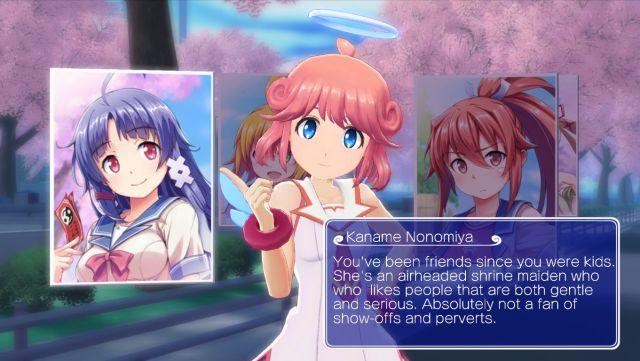
The development of the phases is done through a first-person perspective developed on rails in which the girls will progressively appear to attack Tenzou with their attacks, which include both hitting with love letters and screaming from a distance, determined by sets of Japanese characters that will approach until impact, to cause damage and reduce the life bar until reaching zero, which will mean the end of the game. For this, it will be necessary to use the Pheromone Shots to hit them until they are knocked out or, failing that, hit the points marked with pink or yellow characters, which appear when aiming at certain points, to achieve an Ecstasy Shot that will allow to defeat the females in a single Shooting. At the same time, it will be, and once advanced in the game, the Doki Doki Field can be invoked, a field in which through different shots the euphoria bar of the female in question can be filled to finally get a great reaction energy that, when leaving the field, will allow to knock out the girls who are in the radius of action. For this, it will be necessary to accumulate energy in the Doki Doki Bar, a heart-shaped bar located next to the life bar, through gradually knocking out the girls in each phase.
At certain times the game’s story will progress through novel visual style sequences in which dialogue options will be offered, with consequently disparate results, and also extra phases with small mini-games that will have to be solved by shooting, such as in the library helping Kaname find the book he needs while taking care that the ladder on which he leans does not move, overcoming Akira’s intensive training with steel balls or acting as a model for Kaoruko trying to keep Tenzou awake. In later ones, it will be necessary to overcome some rather surreal situations such as preventing Kaoruko’s kidnapping or freeing Kaname from the clutches of a strange tentacled monster, phases that will require a little more skill to overcome them.
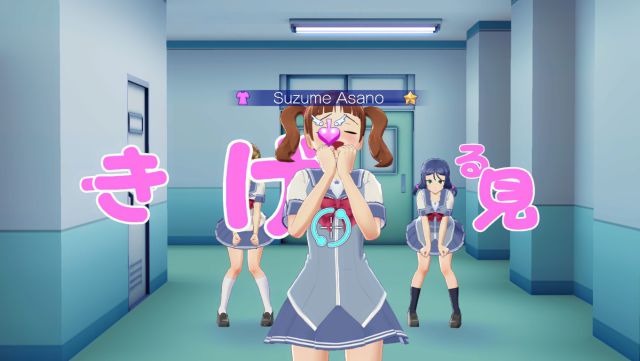
The game offers up to three different endings for each of the girls, which will depend both on the balance of the parameters of intelligence, athletic ability, style and lewdness, which will vary throughout the game, and on the answers chosen in the visual novel events, denoted by different tones that will specify which one is correct and which one causes a negative impact. The parameters will be configured through a small questionnaire that Patako will carry out at the beginning of the game and during the game they will increase or decrease depending on the girls who are summoned at Doki Doki Field and their euphoria explodes.
Another of the available game modes is the Score Attack mode, which offers the possibility of replaying each of the phases of each route of the story mode but with some changes such as not being able to regenerate life when executing the Doki Doki Field, which in This case produces the Fever effect by producing a burst of euphoria that encompasses three or more girls at the same time and which results in doubling the score obtained momentarily until after a while without shooting or changing areas, at which time the effect disappears. Additional scoring bonuses are also added when executing several Ecstasy Shots in a row without taking damage and also when chaining several with a certain speed, which will provide the Speed Shots bonus. The variants that are offered include the routes of the story mode separately or play all of these in a single pass, ignoring the intermediate phases of each of the females. Finally, the option of choosing a specific phase of each of the routes separately is also included as an additional option.
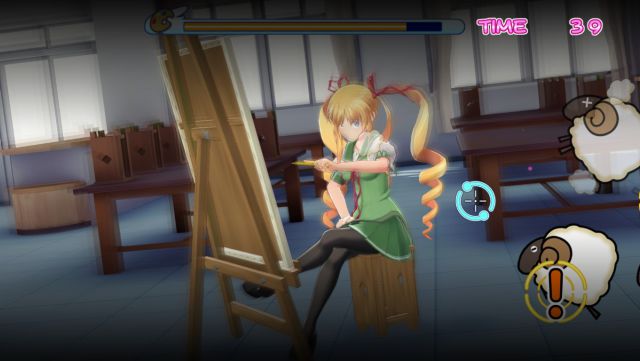
The Doki Doki Carnival mode, meanwhile, is an extra mode that was originally added to the conversion of the game for PlayStation 3 and whose development offers a continuation of the post-game events, introducing in this mode Ekoro, who would later appear in Gal Gun Double Peace. In this mode, development is carried out through a scheme with different phases conforming different routes to complete and the gameplay is reduced to simple skit-like sequences similar to those seen in the Tales saga games with different groups of girls from the Kagurazaka institute as protagonists. The gameplay in this case changes focusing on phases in the Doki Doki Field with the objective of getting the groups to reach the level of euphoria at the same time, being necessary to alternate between each of the girls to increase their bar progressively and having as impediments both the blocks that each of them will perform on Tenzou’s shots as well as the progressive reduction of the euphoria bars of each one of them as well as that of Doki Doki, which when reaching zero will mean a Game Over.
The rest of the modes offer various extras and additional content for the game. The first of them is Collection, which includes two variants in which to consult, on the one hand, the cards of each class and additional characters that appear in the game and, on the other, consult the different titles obtained, eight in total, during the game to through each of the ten ranges into which they are divided. The files include a short presentation of each character, including class and name, while consulting a data set for each one of them. From the outset, this tab is empty and the information will only be displayed once the corresponding character enters the Doki Doki Field on different occasions, providing in turn, and additionally, data on the number of times they have entered the field. and also offer the Fantasize option, in which you can see the complete model and perform different actions.

The second mode is the Dressing Room, which offers to configure the costumes of the characters for the main protagonists as well as for the students of the Kagurazaka Institute to give a new touch during the successive games with new aspects. In the first case the variants are limited while in the second a total of twelve options are included to choose from, the three default basic and the remaining different sets offered as DLC in the original game and that are included as standard in this version, being including the striking set of the Seven Sisters of Purgatory from the Umineko series, which appears fleetingly in one of the areas of the game as a decorative element. The same applies to the attack objects of each of them.
Finally, there is the Gallery mode which includes a total of 196 elements, being mostly illustrations of the main game, character design sketches and also drawings related to each of the girls from the Kagurazaka Institute. Most of these items will be locked out of the box, except for the story mode and Doki Doki Carnival illustrations that will open upon completing each of the routes, and which can be acquired by spending golden angel feathers, obtainable by completing Story and Score modes. Attack.
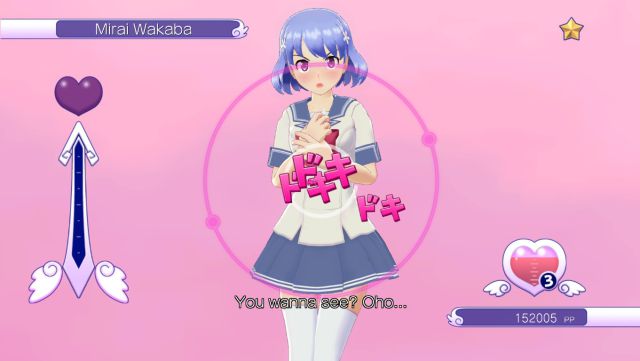
In terms of playability, this title offers the gameplay typical of classic shooter on rails, prioritizing shooting and hitting enemies to increase the score while trying to avoid damage, while mixing touches of fanservice to offer a carefree development but not Free of typical tints of the romantic style of Japanese animated series. Thus, in this aspect we have in this section a title that is effective both for being direct and for the different techniques and playable features implemented that print their own character. In comparison, the sequels in this aspect include aspects that in a certain way facilitate and offer variety to the gameplay, with options such as selecting a path or variations of shots and weapons, but this does not detract from the characteristics of this title and that despite time Almost a decade after its appearance in Japan, the game continues to be fun and entertaining.
Regarding the graphic section, it should be said that the game offers an appreciable improvement in the designs and modeling of the Kagurazaka girls and the main characters compared to the Japanese version, something that also applies to the illustrations of the game to the point of adding some new for the occasion. For its part, the scenarios retain the same style of the original game without appreciable changes, something that leaves it a little below the result obtained with subsequent deliveries. In general, the section is acceptable, managing to define more if possible the anime style of the game.
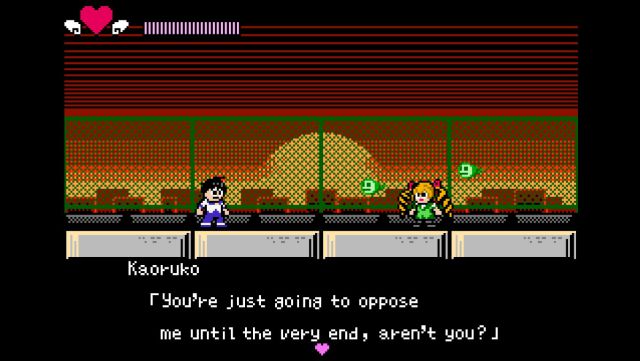
Regarding the sound section, the game offers the soundtrack of the original game with instrumental tracks that include different styles depending on the phase and action of the game, more accelerated in the last phases of the game and more slow in the moments of the visual novel. For its part, the game offers a new version of the opening song of the original game adapted to this new version, while the 8-bit style version can also be heard by activating the security screen option. As for the dubbing, the game only includes voices in Japanese.
CONCLUSION
For all practical purposes, Gal Gun Returns is, in essence, a title that offers the opportunity to enjoy the title that started a franchise that celebrates its 10th anniversary. Although compared to its successors it has certain shortcomings, in practice its development is interesting in all its aspects, both for its stylized graphic section and anime cut and for its playability, following the classic guidelines of the genre, as well as for its carefree focus and the variety of game modes and bonus content it includes. A title that fans of the saga and Japanese-style games will appreciate in their proper measure.
THE BEST
- Addictive gameplay due to both the on-rails game style and the wide variety of phases.
- Good selection of game modes that expand the lifespan of the game, with different styles and in turn offering a wide variety of extra content.
- Graphically it stands out for the modeling designs and its marked anime style.
WORST
- Texts only in English.
- Technically it has aspects in which it is discreet.
Okay
It meets the expectations of what a good game is, it has quality and it does not present serious flaws, although it is missing elements that could have taken it to higher heights.
